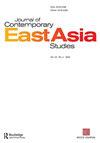ASEAN centrality under threat – the cases of RCEP and connectivity
IF 1.4
Q1 AREA STUDIES
引用次数: 16
Abstract
ABSTRACT This contribution takes stock of ASEAN centrality in trade and the emerging policy area of trade infrastructure, also known as connectivity. ASEAN centrality in the East Asian and Indo-Pacific regions has increasingly been called into question, but most studies have failed to specify what ASEAN centrality is and how it can be measured. Outlining both a technical and a substantial definition, this study presents the state of affairs and current trends of ASEAN centrality in the areas of trade and connectivity. Disaggregating the concept, the paper assesses ASEAN’s role in the two policy areas as a leader, convener, convenience, and necessity. ASEAN’s central position in trade is under threat due to a changing environment, with trade ties increasing between ASEAN’s partners. In addition, ASEAN leadership in the RCEP negotiations has been symbolic rather than substantial. In connectivity, ASEAN centrality is even more questionable. Its regional connectivity vision is contested by other states and relationships act as conduits for the exercise of power.东盟中心地位受到威胁——以RCEP和互联互通为例
摘要:这一贡献评估了东盟在贸易和新兴贸易基础设施政策领域(也称为互联互通)中的中心地位。东盟在东亚和印太地区的中心地位越来越受到质疑,但大多数研究都未能具体说明东盟的中心地位是什么以及如何衡量。本研究概述了技术性和实质性的定义,介绍了东盟在贸易和互联互通领域的中心地位的现状和当前趋势。将这一概念分解,本文评估了东盟在这两个政策领域中作为领导者、召集者、便利性和必要性的作用。由于环境的变化,东盟在贸易中的中心地位受到威胁,东盟伙伴之间的贸易关系日益密切。此外,东盟在RCEP谈判中的领导地位是象征性的,而不是实质性的。在互联互通方面,东盟的中心地位更值得怀疑。其区域连通性愿景受到其他国家的质疑,而这种关系是行使权力的渠道。
本文章由计算机程序翻译,如有差异,请以英文原文为准。
求助全文
约1分钟内获得全文
求助全文
来源期刊

Journal of Contemporary East Asia Studies
Social Sciences-Cultural Studies
CiteScore
2.50
自引率
0.00%
发文量
10
审稿时长
6 weeks
 求助内容:
求助内容: 应助结果提醒方式:
应助结果提醒方式:


